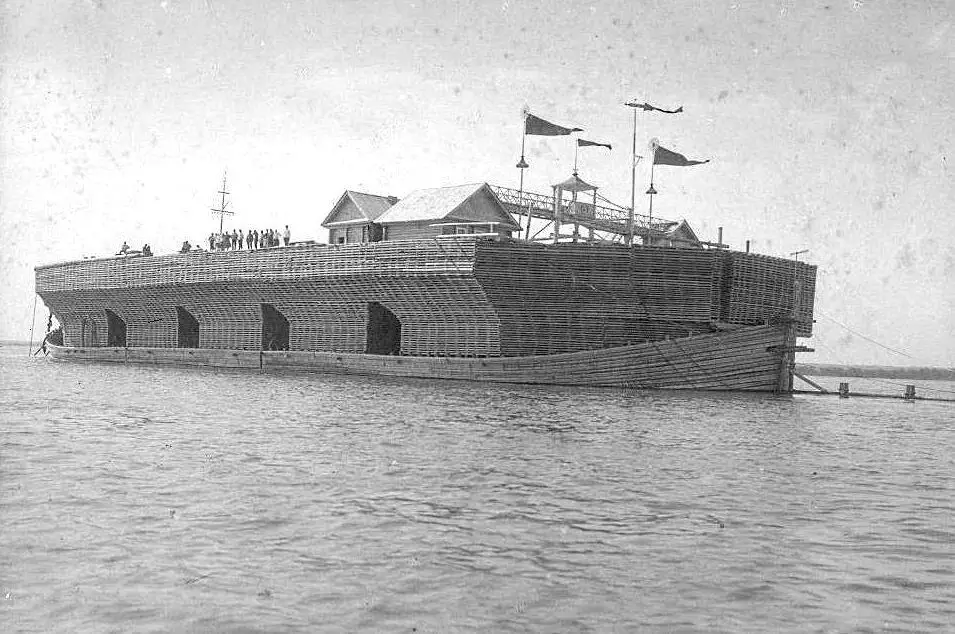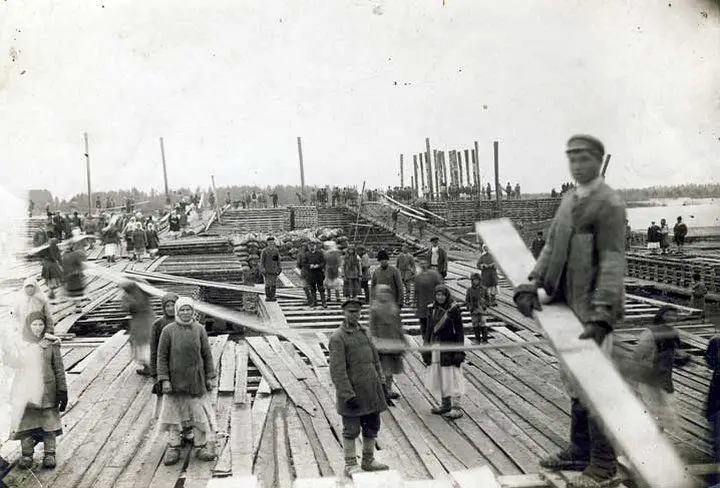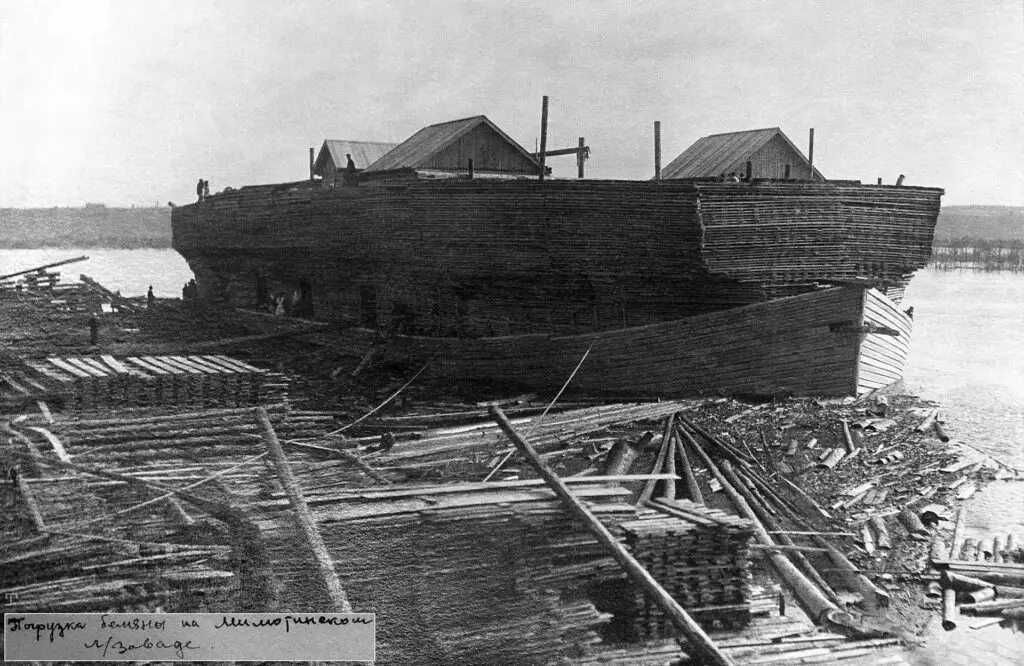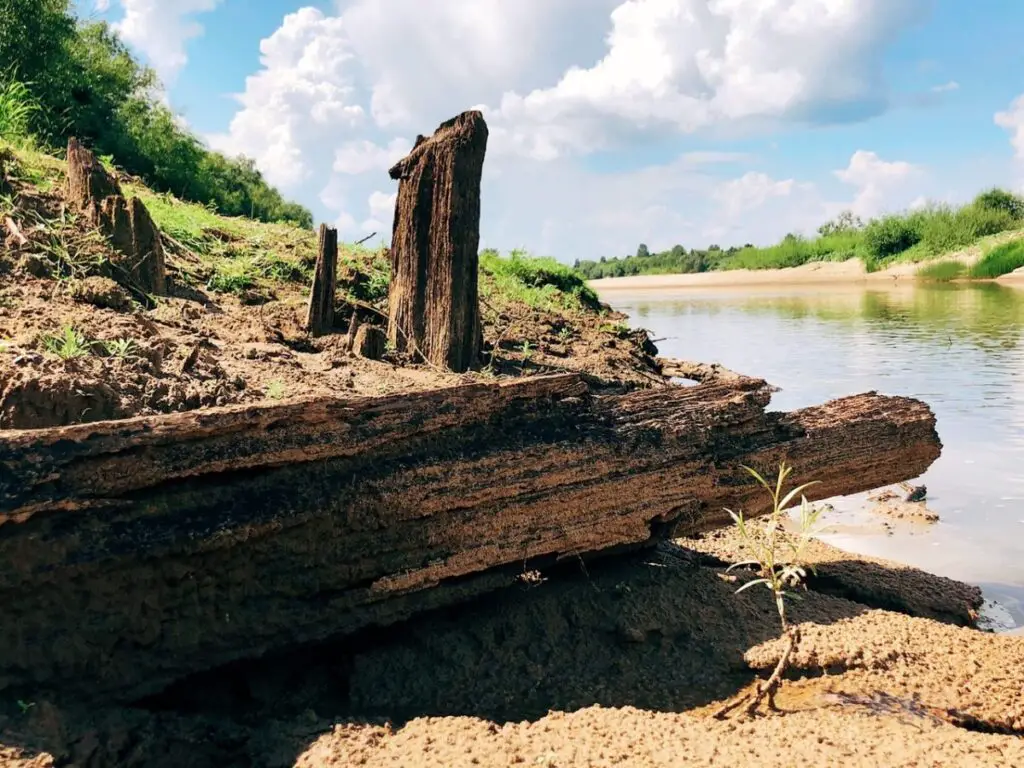Belyana: They were totally built from tree trunks and to this day, some of the largest wooden ships that were ever built.
Yet, these gigantic floating stacks of wood were designed as single use. They were used for one journey.
Russia has about one-fifth of the globe’s forests, and consequently lumber has been an integral part of the country’s economy for centuries.

Content
And while other nations are also dependent on forestry for their economic health – Canada is a prime example – Russia’s way of getting wood from forests to towns and cities was once unique.
Loggers built boats, called belyanas, of the very wood they were shipping, and once it reached their destinations, the vessels were taken apart.
Housing
Afterwards, the logs, beams and planks were added to the stockpile and sold to sawmills who produced the end product. The milled wood was then sold and used for building housing.

It was an unusual but highly effective method of transporting lumber which only ended once oil became the country’s primary fuel. But from the 16th to the early 20th century, Russia used belyanas to move wood from their source to the factories and plants that turned them into refined lumber.
Some were massive, capable of towing many tons of lumber down rivers like the Volga and the Vetluga. Each undertaking was ingenious.

13,000 Tons
First, trees were cut down, always in winter time. In spring, rivers became swollen with melted snow and rain, so it wasn’t until they had returned to normal levels that workers built a belyana.
These ships were sometimes capable of carrying as much as 13,000 tons of wood. Coupling that with the pine and spruce that was used to build the belyana meant that each shipment was considerably larger and more valuable when it arrived than it was when it left. Once the belyana docked at a riverside city, the boat was dismantled.

Steamboats
Belyanas were particularly helpful to communities along Russia’s major rivers. From the 16th century until part way through the 20th century, these towns depended on wood shipments so they were able to heat their homes and build new structures.
Once steamboats became commonplace in the 19th century, they moved wood for these towns, and gradually belyanas were used less and less.
Even by modern standards of shipping, in which long cargo ships are a common sight on waterways and trade routes around the world, belyanas were massive. Some were as long as 120 metres.
Building belyanas was gruelling work for those in forestry who built them, often demanding crews were away from their families for months at a stretch.

No Engines
Belyanas were really quite an ingenious invention. They had no engines or even sails. They were simply set adrift on the river and floated downstream until their destination was reached. Two cabins were built close to the stern, which served crew quarters and for the pilot.
The pilot’s job was manning the rudder and evading the many perils of a river the size and swiftness of the Volga. Once docked, the belyanas were quickly disassembled. The crew cabins were sold off as ready made homes.
Belyana’s could have a crew of 15 to 35. The biggest one had a crew closer to 100. Their main task was to man the the pumps to help keep the boat afloat.
The following year crews started the entire procedure again.

Railways
But progress doomed belyanas. With the advent of the railway across what was then the Soviet Union, lumber was shipped more economically by train. According to historians, the last belyana was likely constructed sometime around 1930, and it floated down the Volga in 1931.
If you like this article, then please follow us on Facebook and Instagram
Another Article From Us: 100 VIKING SWORDS DISCOVERED IN ESTONIA

Evidence of this fascinating slice of Russian transportation history was uncovered in 2015. Tourists came upon the vestiges of a large wooden boat, about 80 metres in length, in the Vetluga River. Historians determined it was a belyana, one that had caught fire and so its crew abandoned ship.
“In the future, it is planned to move the hull of the underwater part of the vessel that survived the fire to Nizhny Novgorod for restoration work. We are also considering the possibility of creating a separate museum complex for exhibiting Belyany and other monuments of folk shipbuilding,” Yury Filippov.





